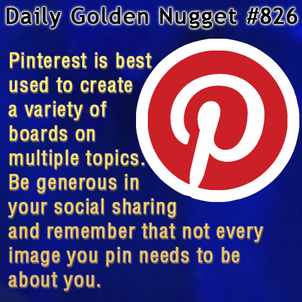 Taking shortcuts with your search engine optimization never helps to increase your sales. Sure, some shortcuts will increase the number of visitors to your website, but the when you follow those numbers through from start to finish, you'll find that it's difficult to track real sales.
Taking shortcuts with your search engine optimization never helps to increase your sales. Sure, some shortcuts will increase the number of visitors to your website, but the when you follow those numbers through from start to finish, you'll find that it's difficult to track real sales.Here's a case study explaining the wrong approach for using Pinterest. I've left out the name of the jewelry store and I've rounded all the numbers up to hide the jeweler's identify and make the case study easy to understand.
I was asked to look into their Pinterest activity. They were paying someone $300 per month to post to Pinterest for them and over the previous 30 days they saw an increase of referral visitors from Pinterest go from 5 to 70, which is very high for a small retail jewelry store.
They previously attempted to manage their own Pinterest board but all that work didn't seem to bring in many customers, so they hired someone who "guaranteed" more visitors.
I'd like to equate any SEO or Social Professional who "guarantees" visitors to the old time Snake Oil Salesman. My best recommendation is to run away from any internet professional who says they can guarantee results.
They asked me to look into their activity because, even though they had 70 visitors, they were not generating any sales so they asked me to look at it. A quick look into their Google Analytics gave all the answers they needed.
I found that they had an average bounce rate of 85% from Pinterest visitors with an average time of site of only 6 seconds. This was pretty bad.
Digging into the heart of the matter, I was able to track all the Pinterest visitors back to the original Pins. The Pins were not being done in their own boards for their jewelry store account and they didn't know how to track the activity back to see what they were paying for.
There's an easy report inside Google Analytics that allows you to track your social activity back to its origin. Log into your GA account and use the left menu to navigate over to Traffic Sources > Social > Overview.
From that report I was able to see the pages that were socially shared, and when drilling down into the report I found the actual Pinterest Pins. Sadly, all the pins turned out to be complete social spam. Sure, the rings were actual pins from their website, but all the captions said something like "click this pin to earn money."
Although the guarantee they paid for included an increase of visitors, it didn't guarantee an increase of sales. They assumed that increasing the number of visitors to their website would translate into an increase in sales. What they didn't realize was that those increased visitors were going to be lured into a "get rich quick" scheme and they immediately bounced from the jeweler's website.
Thankfully they were able to break out of their contract and save some money every month.
Pinterest, like all social networks, takes up a lot of personal time to manage and the returns seem very small. I've avoided the topic of Pinterest in my Daily Golden Nuggets because there was too much buzz around it in 2012 and not enough proof for me to reliably write about it.
What I can tell you is that some of the best results come from jewelers who have several Boards covering a broad range of topics with more than 10 Pins in each Board. That strategy does bring about 10 website visitors per month with about a 50% bounce rate and a very high time on site and pageviews.
So the take away of today's Daily Golden Nugget is to get involved with Pinterest and make sure any hired company or person is pinning directly into your own store account.








